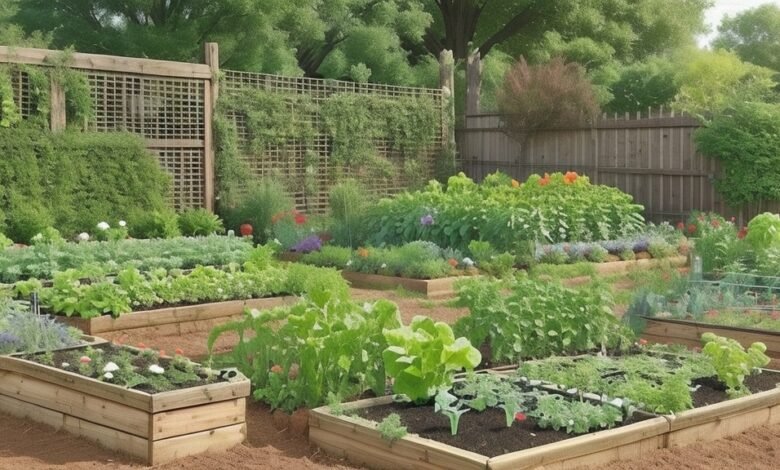How to Manage Bees in Community Gardens Without Harm

In every thriving green space, bees play a fundamental role in maintaining ecological harmony and crop productivity. Within community gardens, their pollination activities ensure the continuous regeneration of fruits, flowers, and vegetables essential to collective sustainability. While their presence can seem intimidating to some gardeners, bees are critical allies in keeping the garden ecosystem vibrant and balanced. Without them, the entire cycle of plant reproduction and natural fertilization would be severely disrupted.
Many urban neighborhoods have embraced community gardens as hubs of cooperation, environmental education, and healthy food production. However, as more people engage with these shared environments, the interaction between humans and pollinators requires careful consideration. Bees, being sensitive to scent, vibration, and movement, can react defensively if disturbed, making it vital to manage their presence compassionately and effectively.
Creating Bee-Friendly Yet Safe Gardening Practices
Designing community gardens that accommodate bees safely requires thoughtful spatial planning and plant selection. Flowers that attract pollinators, such as lavender, sunflowers, and clover, should be strategically grouped away from high-traffic areas like pathways and sitting benches. This ensures bees have sufficient access to nectar sources without frequent human interference, minimizing potential stings or defensive behavior. Establishing buffer zones between social areas and flowering patches can reduce direct contact. Garden planners may use tall, non-flowering plants or low hedges to subtly guide bee flight paths. This design approach balances ecological needs with human comfort, allowing both parties to thrive harmoniously within the same environment.
Water sources are equally important for bees, particularly during hot weather. Shallow dishes with pebbles provide safe hydration spots without risking drowning. Placing these water stations at the far corners of the garden encourages bees to gather away from active gardening zones. Over time, this consistent placement helps them develop predictable foraging routes, further reducing accidental encounters. When pruning or harvesting, gardeners should remain observant. Bees often hide under leaves or within blossoms, especially during midday when flowers are most active. Wearing light-colored clothing and avoiding scented lotions can also help prevent unwanted attraction. Understanding that bees are more interested in flowers than humans fosters a calm, confident gardening attitude essential for peaceful coexistence.
While maintaining pollinator health, gardeners must also ensure their own safety. Some situations may require professional intervention, especially when colonies form near human structures. In such cases, seeking expert assistance through a trusted bee removal service in Glendale, CA allows the safe relocation of bee populations without harm. This professional approach aligns perfectly with the cooperative and sustainable values upheld within community gardens, ensuring both environmental preservation and community well-being.
Bee Management and Ecological Sustainability
Maintaining community gardens requires balancing productivity, safety, and ecological harmony. Bees represent both a vital resource and a potential challenge, demanding measured strategies that support coexistence. The key lies in managing their presence without disrupting the intricate web of pollination that sustains plant life. Gardeners can achieve this balance by adopting organic methods and avoiding synthetic pesticides, which harm pollinators and degrade soil health. Encouraging native plant growth supports local bee populations by providing familiar pollen sources throughout the seasons. Diverse plant species ensure consistent nourishment, reducing bee stress and improving pollination success rates. Meanwhile, allowing sections of the garden to grow semi-wild fosters natural nesting environments for solitary bees, who contribute significantly to local biodiversity.
Another important aspect of bee management involves education. Organizing workshops within community gardens helps members understand the biology and seasonal cycles of pollinators. These sessions strengthen collective knowledge and promote a culture of shared responsibility. When gardeners learn to differentiate between aggressive wasps and gentle honeybees, fear gives way to informed care and appreciation.
Ecological balance also extends to soil health and water management. Overuse of chemical fertilizers not only affects plant quality but also harms beneficial insects. Organic composting provides a sustainable alternative, supporting both pollinators and microfauna essential for long-term fertility. Similarly, drip irrigation reduces unnecessary moisture accumulation that might attract unwanted insects, maintaining a stable garden environment.
Practical Strategies for Maintaining Harmony
To sustain long-term harmony between gardeners and pollinators, consistent management routines must become part of everyday garden practices. Bees, being highly sensitive to disturbances, thrive best in predictable environments where human activity follows a gentle rhythm. Setting designated pollinator zones within community gardens enables bees to forage without constant interruption, ensuring a peaceful coexistence. Morning and late afternoon are ideal times for gardening since bees are least active during cooler hours. Scheduling communal gardening tasks around these periods minimizes contact while preserving productivity. Similarly, maintaining a clean environment by promptly removing overripe fruits or decaying plant matter discourages secondary insects that could provoke defensive bee reactions.
Bees also respond positively to color patterns and scents. Choosing neutral-toned equipment and avoiding brightly colored clothing reduces confusion and attraction. Moreover, using mild, natural repellents made from essential oils like eucalyptus or peppermint can help redirect bee activity away from seating or dining areas without harming them. These subtle interventions maintain the balance between safety and compassion. Educational signage within community gardens further strengthens harmony. Simple reminders about respecting pollinators encourage mindfulness among both experienced and novice gardeners. When individuals recognize bees as partners in growth rather than threats, collective behavior naturally shifts toward protection rather than eradication.
Building relationships with local environmental organizations can also enhance bee management efforts. These partnerships offer valuable guidance on conservation-friendly strategies and even introduce initiatives that support regional pollinator diversity. Through shared projects and research-based approaches, gardeners gain deeper insight into maintaining natural equilibrium.
Bee Management in Shared Green Spaces
The continued success of community gardens depends on maintaining environmental awareness amid urban expansion and climate change. As pollinator populations face global decline, local efforts to safeguard their habitats become increasingly vital. Garden communities serve as small yet powerful sanctuaries, demonstrating that everyday stewardship can significantly impact broader ecological stability.
Future bee management will likely incorporate emerging technologies that track pollinator behavior without intrusion. Sensors and data tools can monitor hive activity, temperature, and migration patterns, allowing gardeners to make informed decisions about plant diversity and watering schedules. Such innovations align with the evolving mission of community gardens—to blend human creativity with ecological responsibility.
Education will remain a cornerstone of progress. As more individuals engage in gardening, understanding sustainable interaction with bees ensures long-term coexistence. Workshops, digital platforms, and school partnerships can spread awareness, inspiring new generations to view pollinators as indispensable allies in environmental restoration.
Policy support will also play an essential role in shaping future initiatives. Local governments may offer incentives for urban pollinator programs, promoting the creation of designated habitats within public spaces. These efforts not only protect bees but also enhance community engagement, food production, and environmental literacy.






